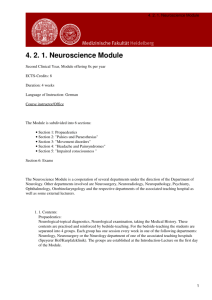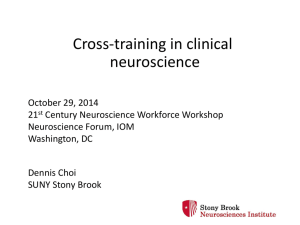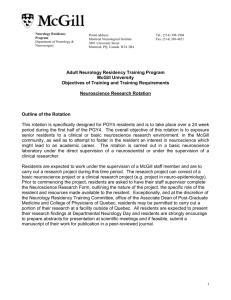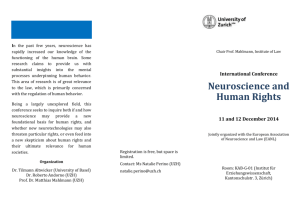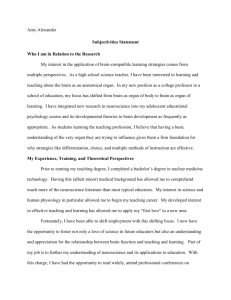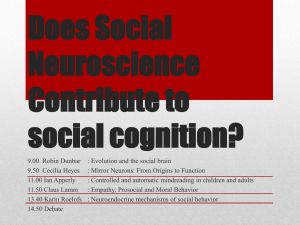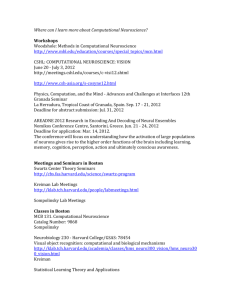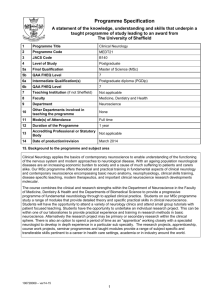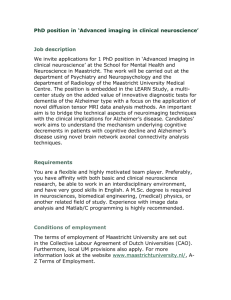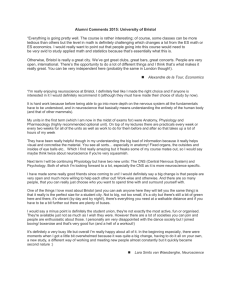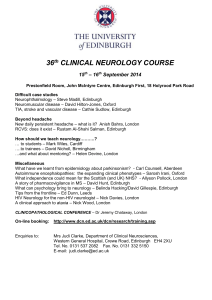report - Anatomical Society
advertisement
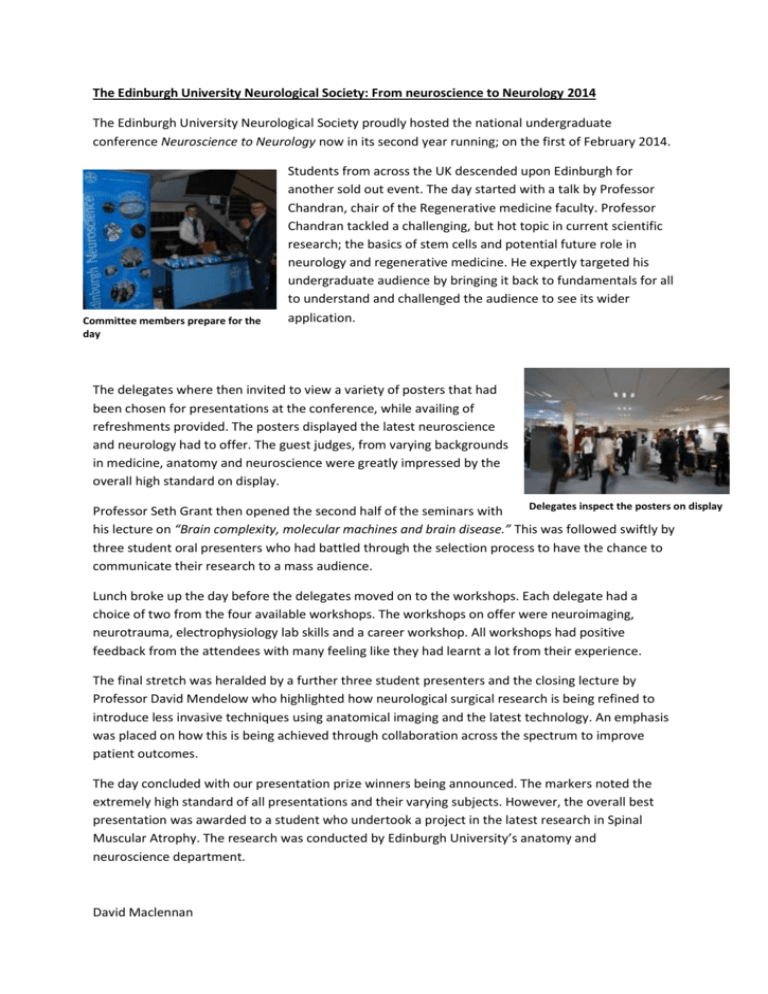
The Edinburgh University Neurological Society: From neuroscience to Neurology 2014 The Edinburgh University Neurological Society proudly hosted the national undergraduate conference Neuroscience to Neurology now in its second year running; on the first of February 2014. Committee members prepare for the day Students from across the UK descended upon Edinburgh for another sold out event. The day started with a talk by Professor Chandran, chair of the Regenerative medicine faculty. Professor Chandran tackled a challenging, but hot topic in current scientific research; the basics of stem cells and potential future role in neurology and regenerative medicine. He expertly targeted his undergraduate audience by bringing it back to fundamentals for all to understand and challenged the audience to see its wider application. The delegates where then invited to view a variety of posters that had been chosen for presentations at the conference, while availing of refreshments provided. The posters displayed the latest neuroscience and neurology had to offer. The guest judges, from varying backgrounds in medicine, anatomy and neuroscience were greatly impressed by the overall high standard on display. Delegates inspect the posters on display Professor Seth Grant then opened the second half of the seminars with his lecture on “Brain complexity, molecular machines and brain disease.” This was followed swiftly by three student oral presenters who had battled through the selection process to have the chance to communicate their research to a mass audience. Lunch broke up the day before the delegates moved on to the workshops. Each delegate had a choice of two from the four available workshops. The workshops on offer were neuroimaging, neurotrauma, electrophysiology lab skills and a career workshop. All workshops had positive feedback from the attendees with many feeling like they had learnt a lot from their experience. The final stretch was heralded by a further three student presenters and the closing lecture by Professor David Mendelow who highlighted how neurological surgical research is being refined to introduce less invasive techniques using anatomical imaging and the latest technology. An emphasis was placed on how this is being achieved through collaboration across the spectrum to improve patient outcomes. The day concluded with our presentation prize winners being announced. The markers noted the extremely high standard of all presentations and their varying subjects. However, the overall best presentation was awarded to a student who undertook a project in the latest research in Spinal Muscular Atrophy. The research was conducted by Edinburgh University’s anatomy and neuroscience department. David Maclennan The aim of the conference was to bring together like minded people who are enthusiastic about neuroscience, neurology, or are curious about neuroscience on a macroscopic or microscopic level. Our aim is to encourage interdisciplinary interactions. Neuroscience is a vastly multidisciplinary and multifaceted field which requires good communication and understanding of each disciplines roles to collectively create innovative research. By bringing the undergraduate community, together we hope to initiate the exchange of ideas across neuroscience related disciplines to encourage early collaboration, as well as mutual respect. David Maclennan

